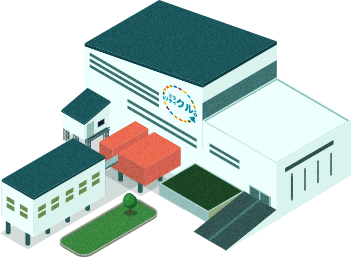

Circular Economy Initiatives
Horizontal Recycling
Aiming to solve issues to achieve a recycling-based society
where all kinds of things can be recycled.
Five Challenges in Achieving a Recycling-Based Society
A recycling-based society aims to create a sustainable society by using limited resources and minimizing waste and emissions.
Creating a truly circular system - from production through consumption to disposal - that minimizes environmental impact through recycling and reuse presents significant challenges that need to be addressed.
-
ISSUE 01
Technological Challenges
Recycling and reusing resources have limitations in current technology. Moreover, often they are not designed to recycle. In such cases, both product designs and production methods need to be improved.
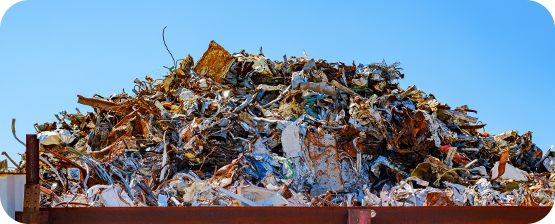
-
ISSUE 02
Economic Challenges
Reuse and recycling often incur higher costs than virgin resources products. Therefore, it is necessary to establish economic incentives for long-term solutions.

-
ISSUE 03
Legal Challenges
Current laws and regulations to promote a recycling-based society are not sufficient. Moreover, some of them hinder recycling and other efforts, so significant regulatory review is needed.

-
ISSUE 04
Awareness Challenges
Both consumers and businesses have yet to fully embrace the concept of a recycling-based society. Education and awareness campaigns are required to turn stakeholders to understand the importance of reuse and recycling.
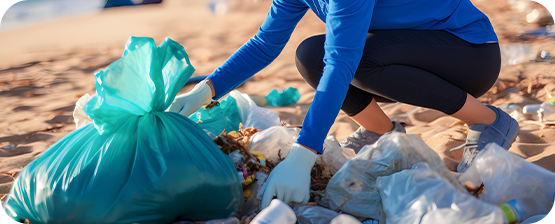
-
ISSUE 05
Global Challenges
Due to resource distribution on an international scale, single-country recycling initiatives are limited. International partnerships and cooperation have been needed.
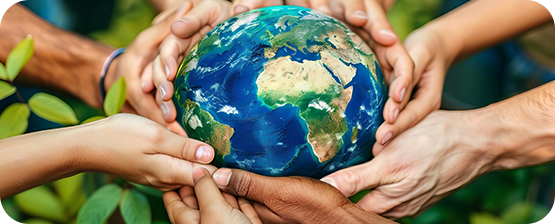

Toward a Future, All Global Waste Can Be Recycled
With regard to the various challenges above, we advocate and promote "Miracle Recycle." -all waste can be recycled- aim for our policy "Advancing Technology to Contribute to a Recycling-Based and Carbon Neutral Society".
Our approach combines creative thinking with flexible implementation to achieve breakthrough recycling solutions.
-
PRESENT

-
FUTURE
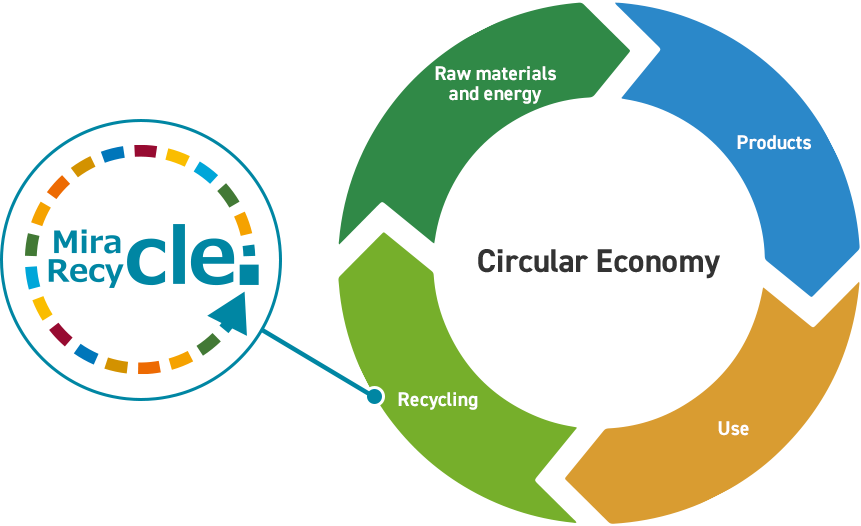
Challenging Horizontal Recycling :
Products Back into Products
Circular Economy Implementation
Horizontal recycling refers to converting used products into resources and creating the same products again. J&T Recycling participates in bottle-to-bottle (BtoB) business that transforms used PET bottles back into PET bottles, and projects that manufacture new tarp from waste tarp.
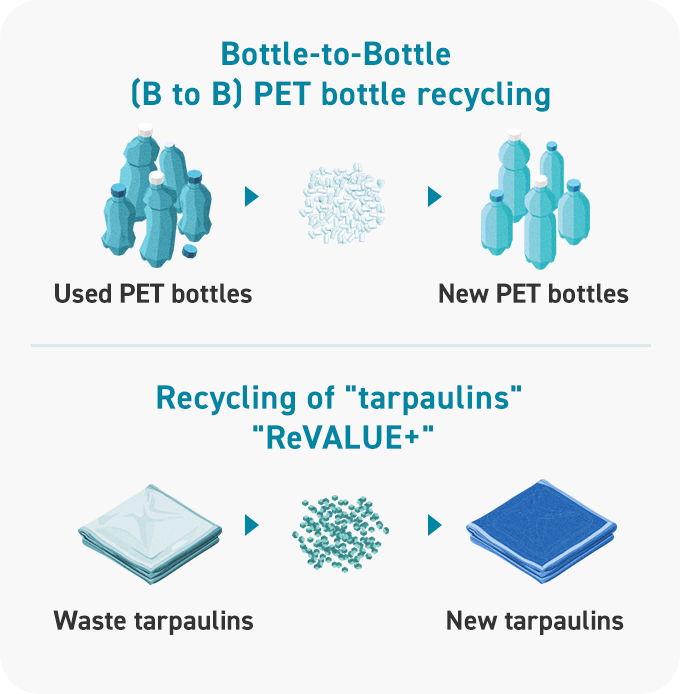
-
Bottle-to-Bottle
(B to B) PET bottle recycling-

Used PET bottles
-

-

New PET bottles
-
-
Recycling of "tarpaulins"
"ReVALUE+"-

Waste tarpaulins
-

-

New tarpaulins
-
The Future Realized Through Circular Economy
-

Environmental Benefits
The circular economy reduces environmental impact through:
- Improved manufacturing-to-disposal processes
- Reduced waste generation
- Decreased environmental burden
- Increased use of renewable energy
- Reduced greenhouse gas emissions
-
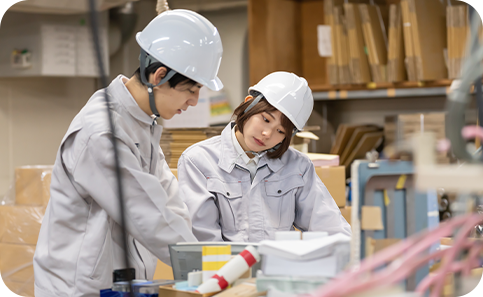
Economic Benefits
The circular economy creates the potential for new business models and employment opportunities, including:
- Product reuse and recycling services
- Development of new products using recycled materials
- Innovative sustainable business solutions
-

Social Benefits
The circular economy promotes efficient resource sharing across society, leading to:
- Enhanced social equity
- Improved inclusivity
- Stronger community engagement
-

Efficient Use of Resource
Through product lifecycle management, the circular economy:
- Promotes resource reuse, recycling, and regeneration
- Reduces the need for new resource exploration
- Prevents resource depletion
- Optimizes material efficiency
-
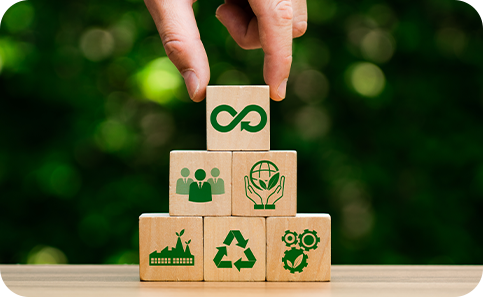
Sustainable Growth
The circular economy achieves sustainable growth by:
- Balancing economic activities with environmental protection
- Addressing current environmental challenges
- Managing resource depletion
- Creating long-term sustainability solutions
Related Information
Local Production for Local Consumption Recycling
Renewable energy derived from J&T's regional recycling networks can contribute to a recycling-based society and the prosperity of local communities.
